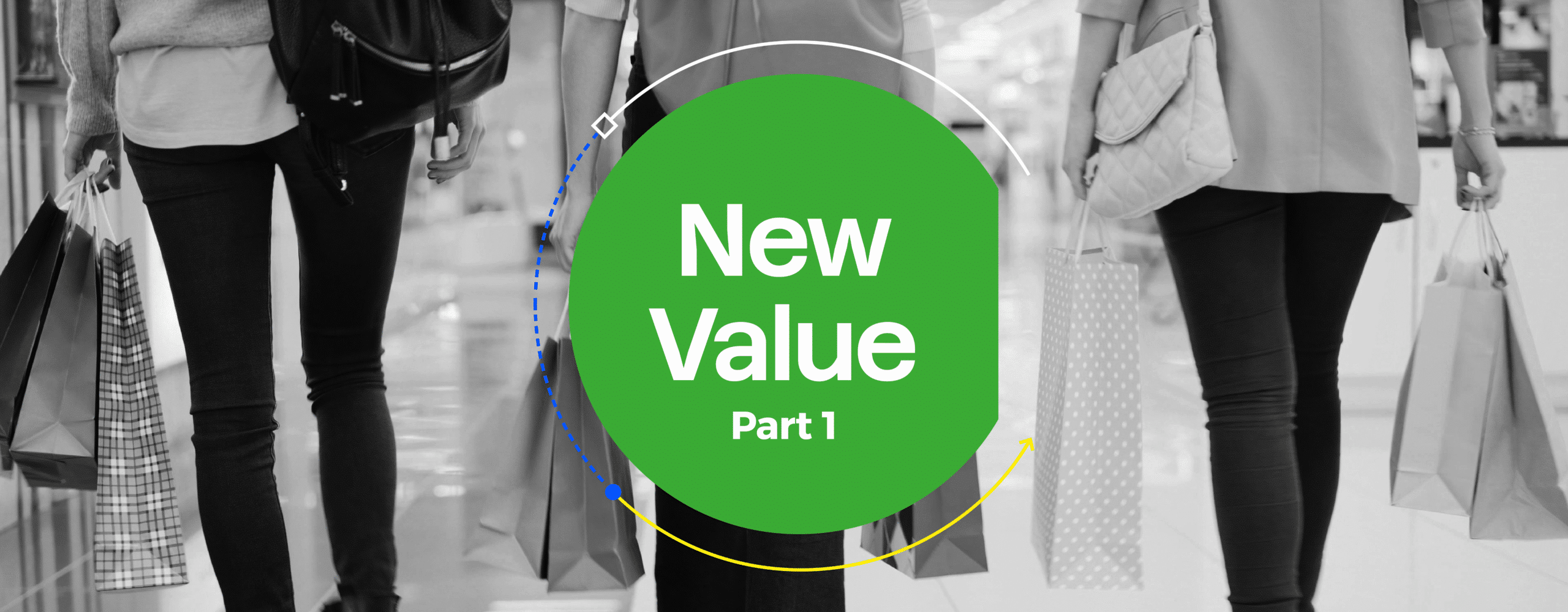More Than a Bargain: What 2025 Buyers Really Want
The start of a new year or the coming of Spring often sparks reflections and predictions – and one trend that’s been impossible to ignore over the past few years is money. More specifically, the lack of it.
From the Cost-of-Living Crisis to the political decisions shaping the economy- money, budgets, and value have dominated the conversation. And with no signs of relief in sight, a perfect storm of global uncertainty – turbulent US elections and tariffs, a tough UK budget and increased taxes on businesses, and international conflicts driving fear-based rhetoric in the news – is impacting everything from prices and wages to consumer confidence.
So, as we head out of the “Cost-of-Living Crisis” into a new norm of “everyday budgeting” what does this all mean for consumer behaviour today?
One thing is clear: value is no longer a race to the bottom or a one-size-fits-all concept. The lowest price isn’t always the best option, and the impact of recent economic policy changes hasn’t been the same for everyone. Some high streets are thriving while others are barely hanging on, showing that consumer behaviour varies not just by income or location, but by individual priorities.
To understand this shift, we’ve built on our 2025 personas to dig into how they’ll be changing behaviour and – most importantly – what brands can do about it.
We analysed trends at the close of 2024 and built our 2025 outlook around four key consumer personas, developed by WGSN. Their research is thorough (and worth a read here), but here’s a quick summary on our take on each:
The New Nihilists
Disillusioned with the world and uncertain about the future, they focus on the present and embrace doing things their own way.
They value humour, unconventional ideas, and freedom. While careful with money, they’ll splurge on things that make them feel unique. Authentic, unpolished brands will win them over.
The Reductionists
Focused on simplicity and purpose, Reductionists want to reconnect with people and make thoughtful choices after the overload of the pandemic. They avoid waste, choosing quality, sustainable products.
For them, less is more: fewer possessions, less screen time, and more meaningful moments. They support brands that align with their values, like sustainability, fairness, and community impact.
The Time Keepers
Time Keepers prioritise making the most of their time, focusing on meaningful experiences and creating balance. They seek ways to simplify life without cutting corners, like services or tools that free up their schedule.
They value quality over quantity, avoiding rushed or wasteful things, and enjoy rituals that bring calm. Brands that respect their time, offer flexibility, and focus on long lasting value will resonate with them.
The Pioneers
Driven by curiosity, Pioneers thrive on exploring new ideas, blending physical and digital worlds for boundary-pushing experiences.
They’re risk takers, seeking solutions to big problems like smarter cities and innovative tech. They admire brands that inspire, challenge the norm, and help them navigate between the real and virtual worlds.
Viewing the world through these lenses helps us make sense of what “value” might mean today.
We’re no longer in the early days of the Cost-of-Living Crisis mixed in with the tail end of COVID where uncertainty reigned, and every decision was made cautiously. Consumers are used to living with this more austere outlook – and have adapted their behaviour accordingly.
Value is no longer just about price.
It’s is about the overall benefit consumers receive from a product or service.
This might be choosing to go out for one expensive meal as a special treat, instead of a couple of meals over the course of a few months. It might be buying a more expensive bottle of wine and savouring it over a weekend instead of buying two. It might be spending more on a product made to last, or buying sustainable or ethical options but scrimping elsewhere.
Value is a more complete notion than ever before – and for brands to win they need to understand their role in customers lives, how they are perceived – but also who their customers are and how they view purchasing decisions.
We took the four personas outlined above and built them into a matrix so we could start to understand how they might sit alongside each other and make decisions in different ways:

It’s here we start seeing how the idea of “value” will change for our 2025 personas.
For our Reductionists, value means being selective and prioritising quality over quantity. They seek brands with clear ethical values that reflect their lifestyle, that dislike waste and over-production. They’re willing to pay more for brands that share these values. Brands in this space should consider dialling up their ethical credentials, being open about the additional costs involved to make the product.
For Pioneers, value is rooted in novelty and creativity – ideas that set them apart from the mainstream. They seek innovative, unique products or services that enhance their status, like creative collaborations, personalised brand experiences, or limited edition releases. This sense of personalisation and exclusivity is worth paying more for. Brands in this space should focus on offering scarcity and personalisation to demonstrate value.
For our Time Keepers, value is about convenience and reliability. They focus on cost-effectiveness, not just the lowest price. This group looks for products or services that save time or simplify their routines. Time Keepers are highly aware of the cost/benefit of every purchase, so brands should clearly communicate the benefits of any price premium and be transparent about products that offer pure value. Brands in this space should highlight efficiency without compromising quality.
For our New Nihilists, the group with the lowest disposable income, affordability is key – but they still seek products that feel personal, unconventional, or unique. They value flexibility and may pay a premium for it, but generally they look for value-driven experiences. Brands in this space should focus on traditional value while offering as much flexibility and uniqueness as possible.
In summary, value is no longer one-size-fits-all. In 2021, during the height of the cost-of-living crisis, brands fought to compete on price, affordability, and convenience. But times have changed. Today, budgeting is a personal choice – some consumers are opting for fewer, higher-quality items, while others are consciously trading down. It’s no longer just about the lowest price; it’s about what truly matters to each individual.
To win in 2025 (and onwards), brands must understand what drives their customers’ decisions and tailor their messaging accordingly. If price is your strength, own it. If your value lies in quality, sustainability, or premium benefits, highlight that instead.
Value isn’t just about cost – focus on what makes your offering worthwhile rather than chasing a price war. Instead of fearing the shift, embrace it.
Buyer’s needs are evolving, and so should you.










